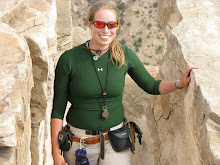In other news, Concepcion, Chile is now sitting ten feet further west than it did previous to the magnitude 8.8 earthquake.
Only about 3.1 meters displacement, you say? For one event, that is pretty damn significant. That and in the grand scheme of things, there's only a smidgen of crustal shortening and subduction going on there. Amazing to think about how much ocean crust once did exist there before the subduction zone developed. But alas, as the ridge is still actively spreading, the crust must go somewhere!
Something about that whole conservation of mass thing . . .
Then there's this article about Mars. Cool. One of the great questions about Mars is centered around what controlled the erosional and sedimentary features on the planet's surface and what happened to it.
Mars' surface yields some spotty paleomagnetic evidence of possible early plate tectonics (I like to think so, at least. However, it's not universally accepted and other models exist), but it's plainly evident that whatever the tectonic style of the planet, it shut down while Earth was still in the Precambrian Eon (I guess it's considered a "Supereon"?). Mars is just too small to maintain plate tectonics/convection cycles like those of Earth - the heat gradient from core to surface is too steep. I could talk all day about what I think about the formation of the giant shield volcanoes and Tharsis, but that's not what the article's about. Well, it could tie into Tharsis. But it's not directly about it.
Later on, sedimentary features developed - most strikingly, the canyons larger than any found on Earth. Whatever fluids and erosional processes that once controlled this are mostly gone now. It's now being postulated in this article that some of the channel features were carved out by lava.
I can buy this - camped in Snow Canyon State Park in Utah a couple of years ago. It admittedly started as a canyon carved by fluvial (waterflow-driven) processes, but was located proximal to a basaltic magma source as young as 20,000 years old. Eruptions there changed the course of the river - partly by building up topography in some places and carving it out in others. Redirection of waterways carved new, deeper canyons and remnants of older lava flows can be seen near the top of the present day canyon. This is a phenomenon called "inverted topography," where younger rock sits lower than older rock. This is only one way to form inverted topography, but that could be a blog post in and of itself, so maybe I'll save that for another post.
Subscribe to:
Post Comments (Atom)

No comments:
Post a Comment